Study shows a significant negative correlation between body size and temperature preference, shedding light on the mechanisms behind fish size reduction amid climate change
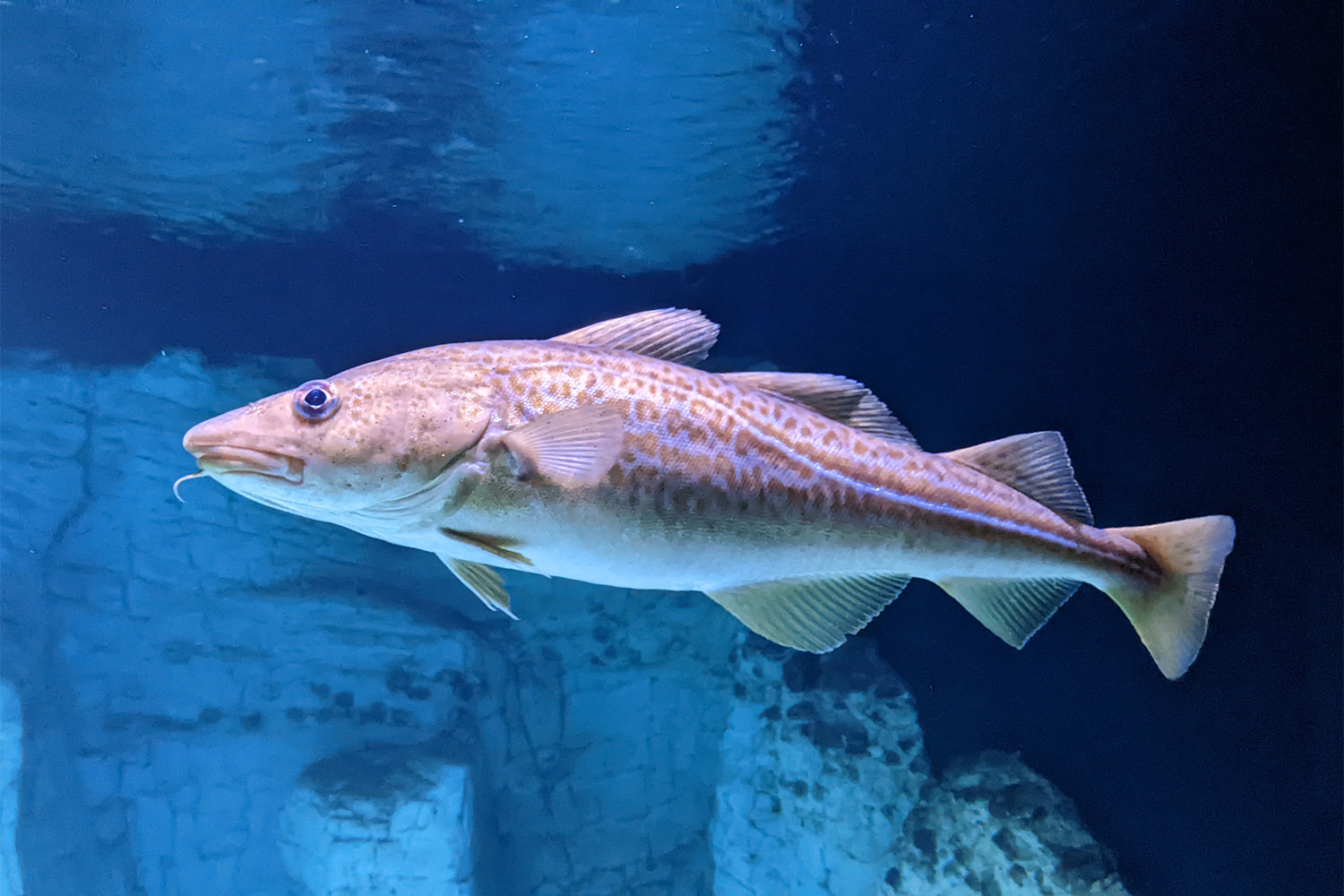
Cold-blooded (ectothermic) fish exhibit temperature-dependent metabolic rates, characterized by an optimal temperature (Tpref) that enhances biochemical processes. Within many fish species, ontogenetic shifts in temperature habitat are a common phenomenon, with larger individuals typically favoring lower ambient temperatures compared to their smaller conspecifics.
The Atlantic cod (Gadus morhua) is a pivotal temperate marine fish with a widespread distribution across the North Atlantic Sea’s shelf areas, extending its reach into Arctic waters and parts of the Baltic Sea. The Atlantic cod plays a crucial role as a keystone predator in the ecosystem, simultaneously serving as a commonly caught species in fisheries, giving it significant ecological and economic importance. Notably, the past few years have witnessed substantial distribution shifts in Atlantic cod populations, thought to be driven by climate change.
The behavioral dichotomy between juvenile and adult cod is striking, with the former occupying shallow coastal areas, embracing a temperature spectrum from −1 degrees-C during winter to 20 degrees-C in the summer, while the latter thrives in deeper, colder waters.
The Atlantic cod’s optimal growth and metabolic temperatures demonstrate a decreasing trend with increasing fish size. This phenomenon is the basis for a hypothesis: as decreases in fish size escalate, the larger Atlantic cod might selectively opt for habitats with colder temperatures to intricately balance and optimize its growth and metabolic performance. This species emerges as an exemplary model organism for unraveling the intricacies of size-dependent temperature preference (Tpref). The central tenet of our hypothesis is that Tpref decreases with fish body size in accordance with previous temperature preference studies based on physiological performance metrics.
This article – summarized from the original publication (Schakmann, M. et al. 2023. The Influence of Body Size on Behavioral Thermal Preference in Atlantic Cod (Gadus morhua): Larger Fish Favor Colder Waters. Fishes 2023, 8(12), 596) – uses the Atlantic cod as a model organism to examine the behavioral size-dependent temperature preference in the context of climate change.
Study setup
The study was conducted at the Marine Biological Section at the University of Copenhagen (Denmark). We used Atlantic cod individuals collected in the wild and spanning a body mass range of 4 to 2,625 grams, totaling 29 specimens, as subjects for determining both their temperature preference and temperature range. The fish were acclimated and held in tanks with seawater mirroring conditions representative of the natural habitat (10 degrees-C, 30 ppt). The fish were fed to satiation with chopped herring three times a week. A deliberate fasting period of five to nine days preceded the experimental trials, allowing for a baseline state and minimizing potential confounding factors in the subsequent temperature preference assessments.
To initiate the experiments, individual fish were carefully situated within a circular tank, the diameter of which varied between 90 and 150 cm, depending on the size of the fish under observation. The tank was initially filled with seawater (4-6 degrees-C) and the water depth was standardized at approximately 20 cm, irrespective of whether the larger or smaller circular tank dimensions were employed.
Prior to subjecting the fish to the incremental temperature increase, an acclimation period of two hours was implemented. The temperature was increased by 2 degrees-C (at a rate of 3.4 degrees-C per hour). At each pre-set temperature point, the heating unit underwent a 15-minute deactivation period at which the behavior of the fish was observed. During this interval, a video camera positioned vertically above the tank recorded the fish in the tank. The camera was connected to a PC via a frame grabber and recorded at 25 frames per second, ensuring comprehensive documentation of the fish’s behavioral responses to the incremental temperature increase.
For detailed information on the experimental design, equipment and fish husbandry; data collection and processing, and analysis, refer to the original publication.
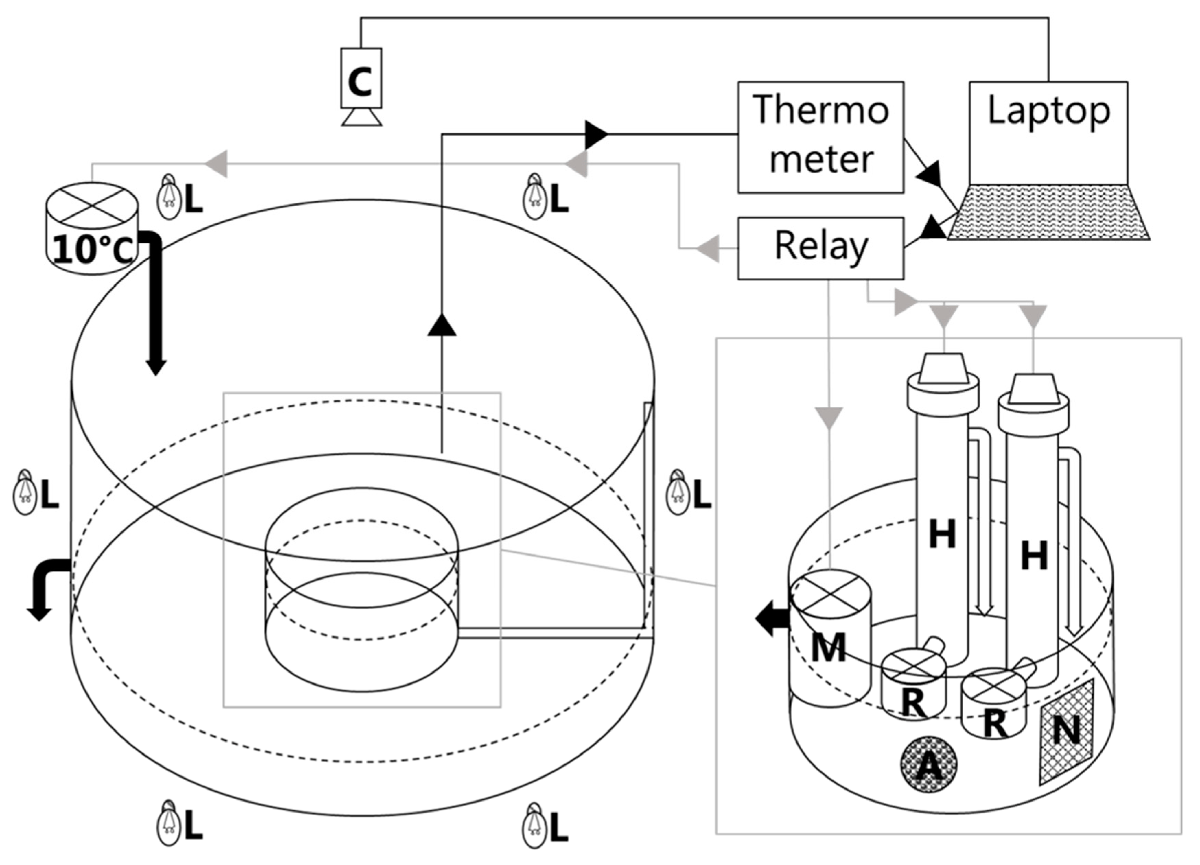
Results and discussion
In the wake of global-warming-induced reductions in ectothermic fish body size, the complex mechanisms driving this phenomenon continue to be a focal point of scientific inquiry. Our study, using the Atlantic cod as a model organism, investigates the behavioral size-dependent temperature preference in the context of climate change. The detection of a significant negative correlation between temperature preference and fish size aligns with in situ habitat temperatures and optimal physiological performance metrics reported in prior studies.
This correlation suggests that larger fish, by exhibiting a behavioral preference for colder areas, may undergo shifts in distribution toward polar regions or deeper waters in response to localized global warming. In essence, our findings contribute valuable insights that enhance predictions of species distribution shifts, highlighting the pivotal role of behavioral size-dependent temperature preference in shaping fish populations and offering essential considerations for conservation efforts.
This study underscores the nuanced relationship between body size and thermal preference, manifesting a notable negative logarithmic correlation between the Atlantic cod’s temperature preference (Tpref) and their body mass. Intriguingly, the observed Tpref spanning 6.4 to 18.7 degrees-C across various fish sizes not only aligns with but also slightly deviates from a range of prior research findings, bolstering the complexity and dynamism inherent in the thermal ecology of this fish species.
Moreover, the divergence in regression slopes for Tpref and Tpejus (pejus temperature is one at which physiological performance ceases to be optimal), resulting in an enlarging temperature span from upper Tpejus to Tpref with increasing fish size (Fig. 2) invites further exploration into how metabolic and physiological demands potentially scale with body size, thereby influencing thermal preferences and tolerances. Understanding the detailed mechanistic bases of these thermal preferences could hold the key to deciphering potential adaptative or maladaptive responses of Atlantic cod to future ocean warming scenarios, potentially providing crucial insights into anticipated population dynamics and distribution shifts.
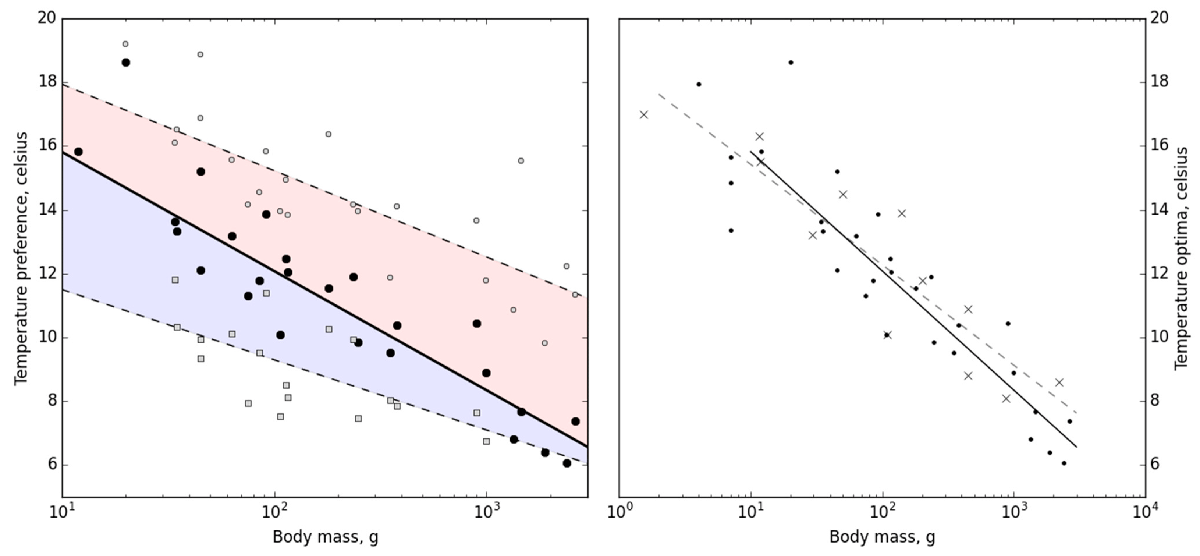
The occurrence of larger cod in deeper waters during warm months may be a compromise to food availability to meet a lower temperature preference that is more optimal for their metabolic capacity and growth. This underscores the ecological significance of size-dependent temperature preference, suggesting that the observed “shrinking” of local populations due to global warming may be a direct result of behavioral size-dependent temperature preference, where larger fish prefer and hence move to colder areas at higher latitudes or deeper water due to the optimization of fitness-related activities.
Furthermore, our study not only establishes a robust correlation between size-dependent temperature preferences and the temperatures conducive to optimal physiological performance in Atlantic cod but also sheds light on the intricate dynamics of thermal habitat selection in relation to body mass. This newfound correlation deepens our comprehension of how Atlantic cod navigates and makes choices within thermal environments based on their size-dependent temperature preferences. The observed correlation implies that the temperature gradient plays a pivotal role in shaping the composition of the fish community according to their behavioral thermal preferences. Fish appear to select habitats with temperatures that align with their physiological performance optima, suggesting a strategic behavioral adaptation to maximize their fitness.
From waste to value: Upgrading marine oils from cod on-board deep-sea vessels
In contrast to the notion that temperatures directly curtail growth and physiological parameters, our findings propose that fish size communities are influenced by the fish’s proactive behavioral response to temperature, optimizing their physiological capabilities and growth potential within specific thermal habitats. This nuanced perspective challenges conventional wisdom and underscores the significance of behavioral size-dependent temperature preference as a key determinant along size physiological temperature optima in fish population dynamics.
Overall, our results shed light on the disproportionate relationship between body size and thermal safety margins in fish, a novel aspect that, to the best of our knowledge, our study is the first to explore. Larger fish, by opting for considerably lower temperatures and maintaining a noticeable distance from their preferred temperature and their upper thermal limits, subsequently contribute to the variations noted within species regarding temperature preferences.
The implications of this finding extend to the understanding of how larger fish, with a higher upper thermal safety margin, tend to actively seek out lower temperatures, contributing to the observed disparity in temperature preferences. The implications of these findings, revealing a relationship between size and thermal preference, stand to significantly inform our understanding of thermal ecology and could be pivotal in forecasting the adaptive behaviors of fish in response to climatic alterations.
Perspectives
Our study on the Atlantic cod reveals a significant negative correlation between body size and temperature preference, shedding light on the mechanisms driving the reduction in ectothermic fish body size in the context of global warming. This size-dependent temperature preference aligns with both habitat temperature patterns and physiological performance metrics, emphasizing its ecological relevance. It also underscores the potential for this trait to enhance our ability to predict species distribution shifts in the face of climate change, offering a valuable tool for conservation efforts.
The data uncovers a substantial correlation between size-dependent temperature preferences and temperatures that promote optimal physiological performance in Atlantic cod. This correlation provides valuable insights into the intricate interplay between fish size and thermal habitat selection, enhancing our understanding of how Atlantic cod navigates thermal environments based on their behavioral preferences.
These findings highlight the significance of temperature gradients in shaping fish communities, where fish actively choose habitats aligned with their physiological performance optima, thus optimizing their fitness. Contrary to the notion of temperature-driven growth limitations, our results suggest that the proactive behavioral response to temperature is a pivotal factor influencing fish size communities, emphasizing the importance of behavioral size-dependent temperature preference in shaping fish population dynamics.
Furthermore, our research highlights the concept of thermal safety margins in fish behavior, as larger fish exhibit a notable preference for temperatures significantly below their upper thermal limits. This finding opens new avenues for exploring the intricate relationship between body size and thermal regulation in fish species. Altogether, our study underscores the critical role of size-dependent temperature preference in shaping the responses of fish populations to climate change and provides insights essential for effective conservation and management strategies.
Now that you've reached the end of the article ...
… please consider supporting GSA’s mission to advance responsible seafood practices through education, advocacy and third-party assurances. The Advocate aims to document the evolution of responsible seafood practices and share the expansive knowledge of our vast network of contributors.
By becoming a Global Seafood Alliance member, you’re ensuring that all of the pre-competitive work we do through member benefits, resources and events can continue. Individual membership costs just $50 a year.
Not a GSA member? Join us.
Author
-
Dr. Mathias Schakmann
Corresponding author
Hawaii Institute of Marine Biology, University of Hawaii at Manoa, Honolulu, HI 96744, USA[117,100,101,46,105,105,97,119,97,104,64,115,110,101,114,111,115,115,109]
Tagged With
Related Posts
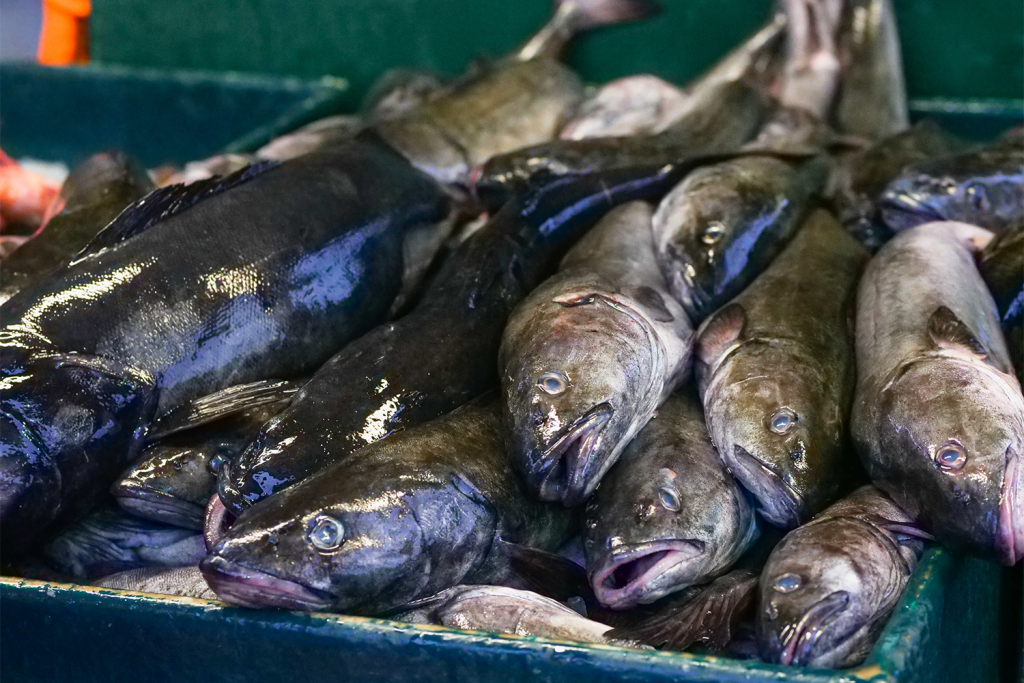
Fisheries
Distinct stocks of Atlantic cod face different climate change challenges
Distinct stocks of North Atlantic cod are being stressed by different factors of varying management severity due to the impacts of climate change.
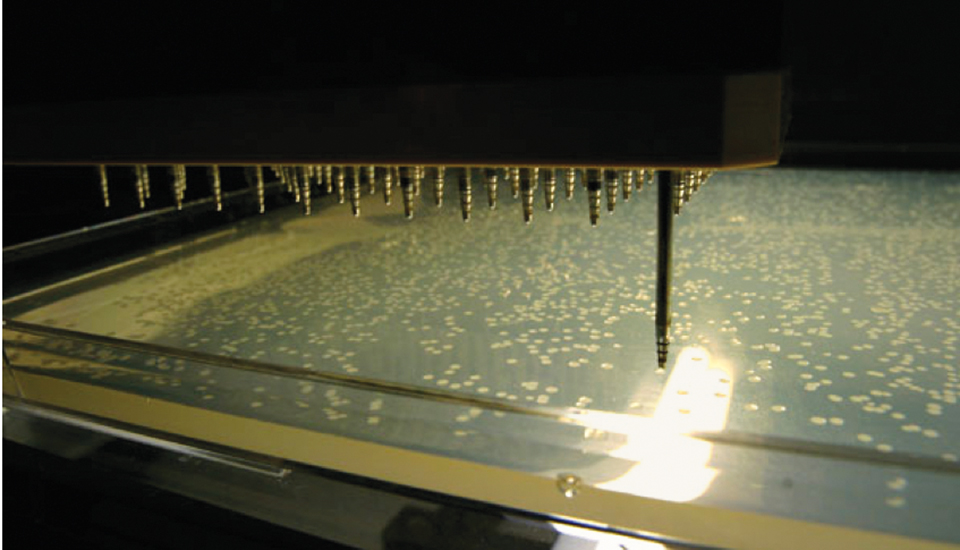
Health & Welfare
Screening probiotic bacteria for Atlantic cod larvae
The addition of probiotic bacteria to marine larvae can reduce pathogenic bacteria and subsequent infection by establishing a protective flora on the mucosal surfaces of the larvae.
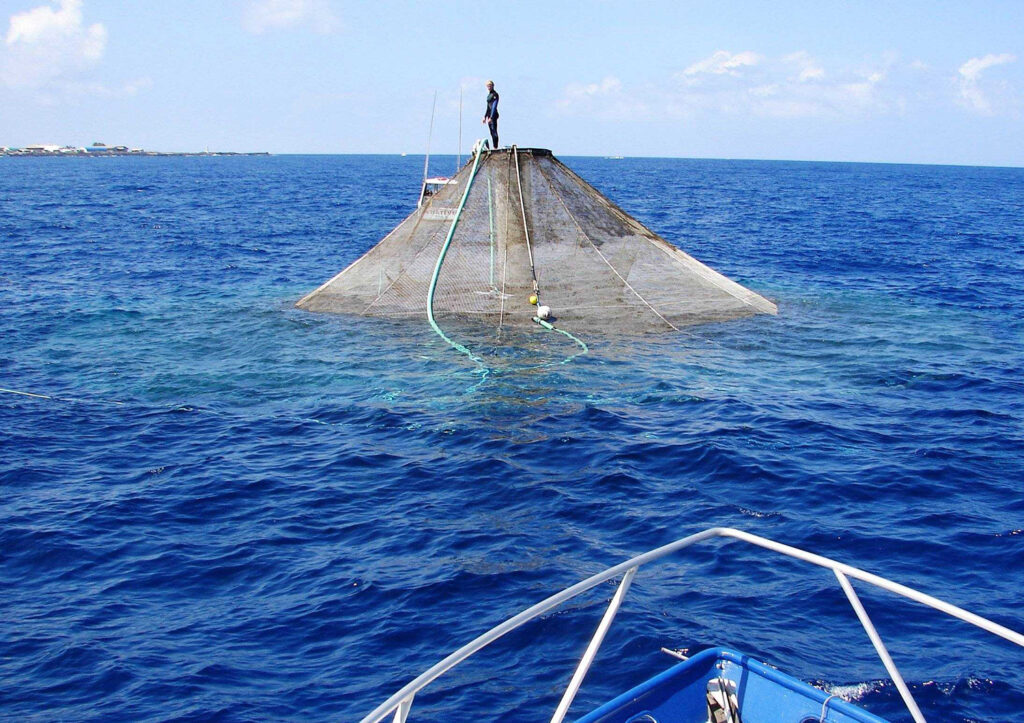
Innovation & Investment
A review of marine fish aquaculture in submerged cages
An evaluation of aquaculture in submerged cages finds knowledge gaps in linking desirable ambient conditions, species needs and production know-how.
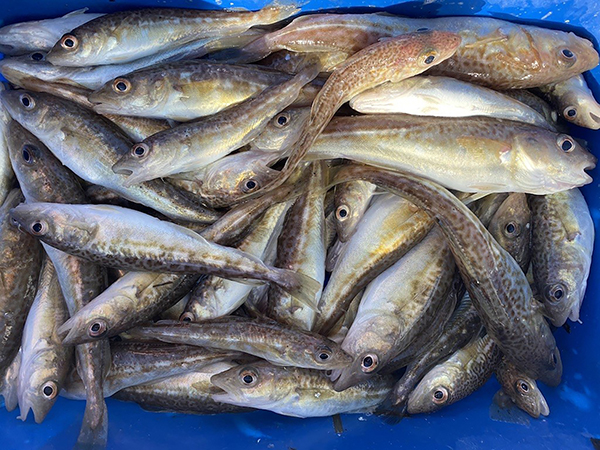
Fisheries
DNA testing identifies juvenile coastal cod in Sweden thought to be extinct
Using DNA testing, a new study has found that there is still a cod population that spends all its life off the west coast of Sweden.



